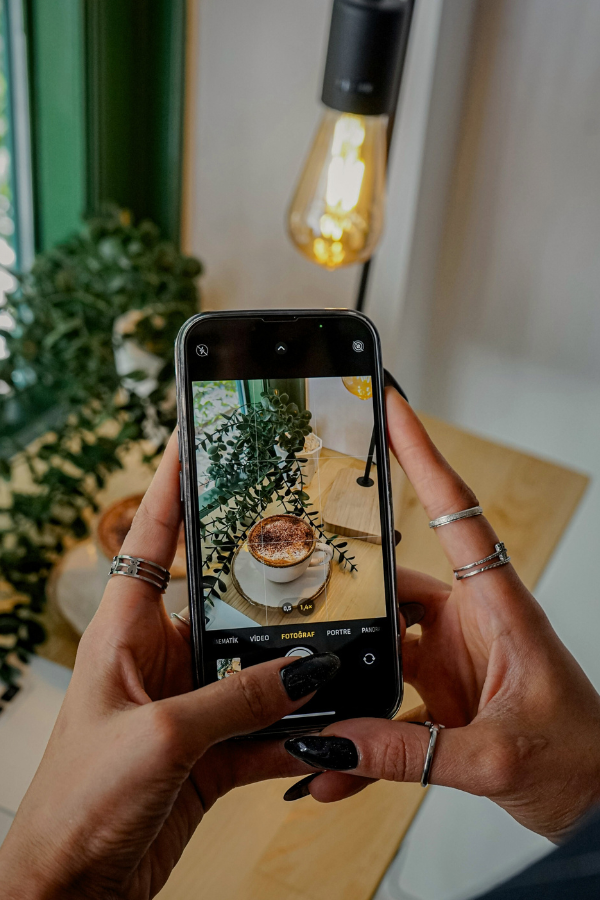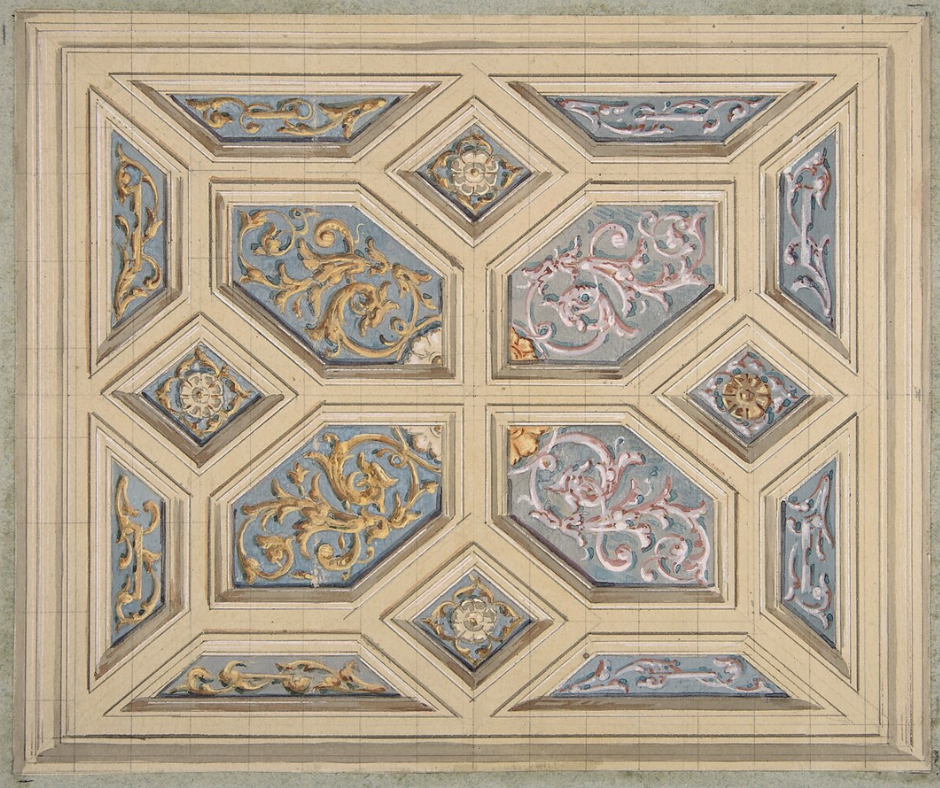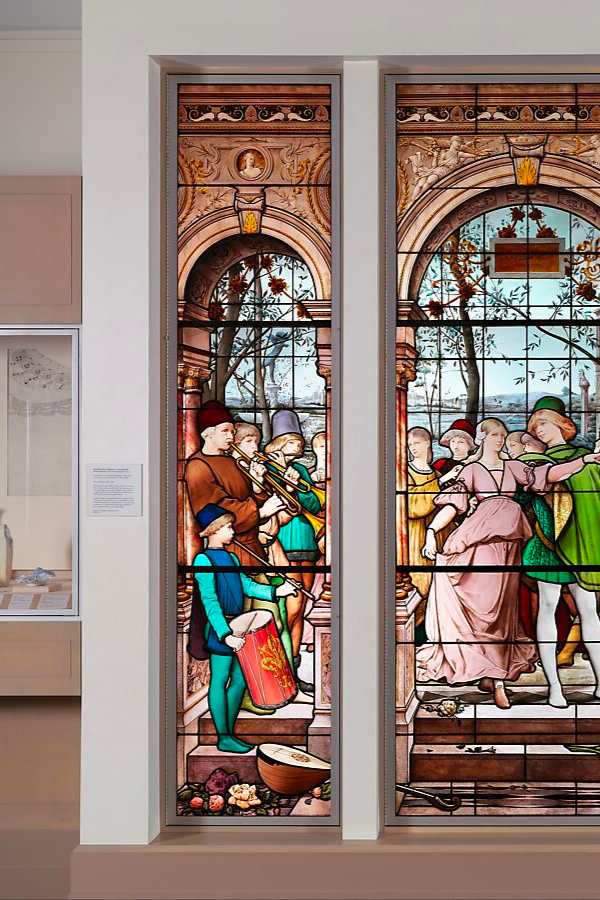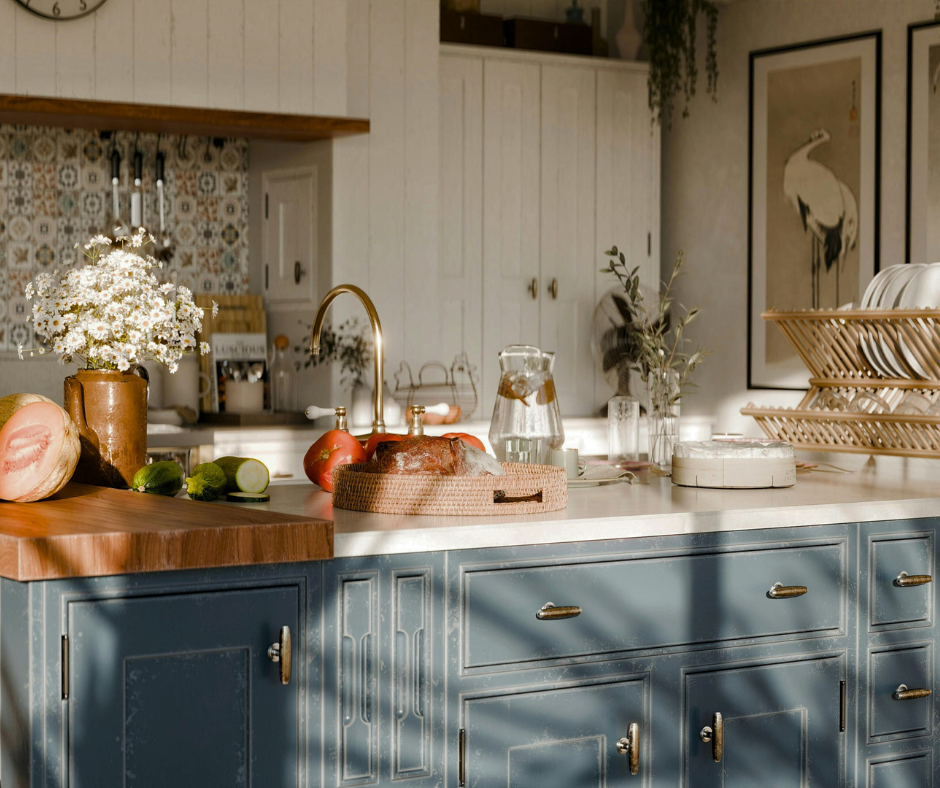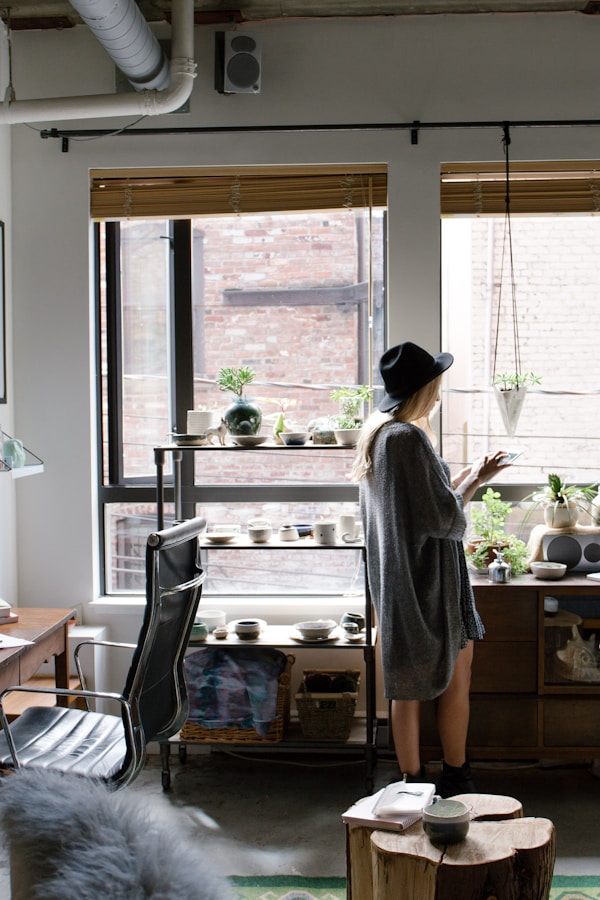
Creating a Seamless Interior Design Client Onboarding Experience
Summary
Reflection Questions
Journal Prompt
Interior design client onboarding is a crucial process that sets the tone for your entire working relationship. It’s about more than just paperwork and pleasantries – it’s laying a solid foundation for your design journey together. When done right, you’re on your way to design success. When mishandled, you might find yourself struggling to keep clients engaged.
Imagine this: You’ve just landed a dream client. You’re both excited, envisioning stunning spaces. But before diving into mood boards and fabric samples, there’s the essential step of onboarding that can make or break your project.
Effective onboarding is where you align expectations, build trust, and set the stage for a smooth project that will have your clients raving about your work (and hopefully referring their friends).
In this guide, we’ll explore how a well-structured onboarding process can transform your client relationships.
Why Effective Client Onboarding Matters for Interior Designers

Photo by Antoni Shkraba on Unsplash.
First impressions in interior design extend far beyond a perfectly styled vignette or a stunning color palette. They begin long before you even reach for a swatch book. Client onboarding is the cornerstone of running a smooth design business.
Imagine this: You’ve just secured a dream client. Instead of immediately diving into fabric selections, take a moment to establish a solid foundation. A well-structured onboarding process shapes everything that follows, elevating your entire project.
Studies show that effective onboarding can significantly reduce miscommunications, project delays, and budget overruns that often plague designers. According to a recent industry report, it can boost client satisfaction by up to 50% and increase referral rates by 70%. Those are impressive numbers.
But it’s not just about statistics. A robust onboarding process sets the stage for a trusting relationship with your clients. It’s your opportunity to showcase your professionalism, establish clear expectations, and demonstrate your expertise in design.
Consider how often you’ve wished you could clarify something with a client before it became an issue. Onboarding is your chance to address potential challenges proactively. Budget concerns? Timeline expectations? Decision-making processes? Tackle these upfront, and you’ll navigate smoother waters throughout your project.
You might be thinking, “I’m a designer, not a project manager!” However, implementing a proper onboarding system doesn’t mean compromising your creative vision. In fact, it frees you to focus on what you do best – creating stunning spaces that delight your clients.
To transform your business with effective onboarding, start by creating a welcome packet that outlines your process, introduces your team, and sets clear expectations. Schedule a kick-off meeting to review everything in person or via video call. And don’t forget to gather all the essential details about your client’s style, needs, and design aspirations.
The Essential Components of an Interior Design Onboarding Process

Photo by Anna Nekrashevich on Unsplash.
Let’s discuss the key elements of a smooth interior design project: the onboarding process. Each component plays a crucial role, and when combined effectively, it creates a seamless experience. Here’s how to craft an onboarding process that sets the stage for success:
1. The Initial Client Inquiry: First Impressions Matter
That initial contact sets the tone for everything that follows. A prompt, professional response demonstrates you’re prepared to transform their space into something extraordinary.
2. The Discovery Call: Getting to Know You
This is where the excitement begins. Ask insightful questions, listen carefully, and start envisioning the project. It’s your opportunity to demonstrate why you’re the ideal match for their vision.
3. Sealing the Deal: Contract Signing
Contracts may not be the most thrilling aspect of design, but they’re essential. Think of it as the foundation of your project – solid, clear, and protective for both parties.
4. The Welcome Packet: Rolling Out the Red Carpet
This is your moment to impress. A well-prepared welcome packet should outline your process, set expectations, and make your client feel valued. Include portfolio highlights to build anticipation for the project ahead.
5. The Detailed Questionnaire: Digging for Design Gold
A comprehensive questionnaire uncovers the information that elevates a good design to a great one. From color preferences to lifestyle details, every aspect matters. Remember, you’re not just designing a space; you’re crafting a personalized experience.
6. The Initial Consultation: Bringing the Vision to Life
This is where your creativity truly begins to flow. Explore the space, take measurements, capture photos, and start brainstorming ideas. It’s the beginning of transforming concepts into reality.
By carefully integrating these elements, you’re not just initiating a project; you’re establishing the groundwork for a design journey that will exceed your client’s expectations. There’s a unique thrill in transforming a space from ordinary to extraordinary.
Remember, an exceptional onboarding process isn’t just about completing tasks. It’s about ensuring your clients feel valued, understood, and excited from the start. It’s your opportunity to demonstrate why choosing you was their best decision.
Now, approach your onboarding with confidence and professionalism, bringing your unique expertise to the process. Your clients (and your future self) will appreciate the effort!
Creating an Effective Interior Design Client Questionnaire
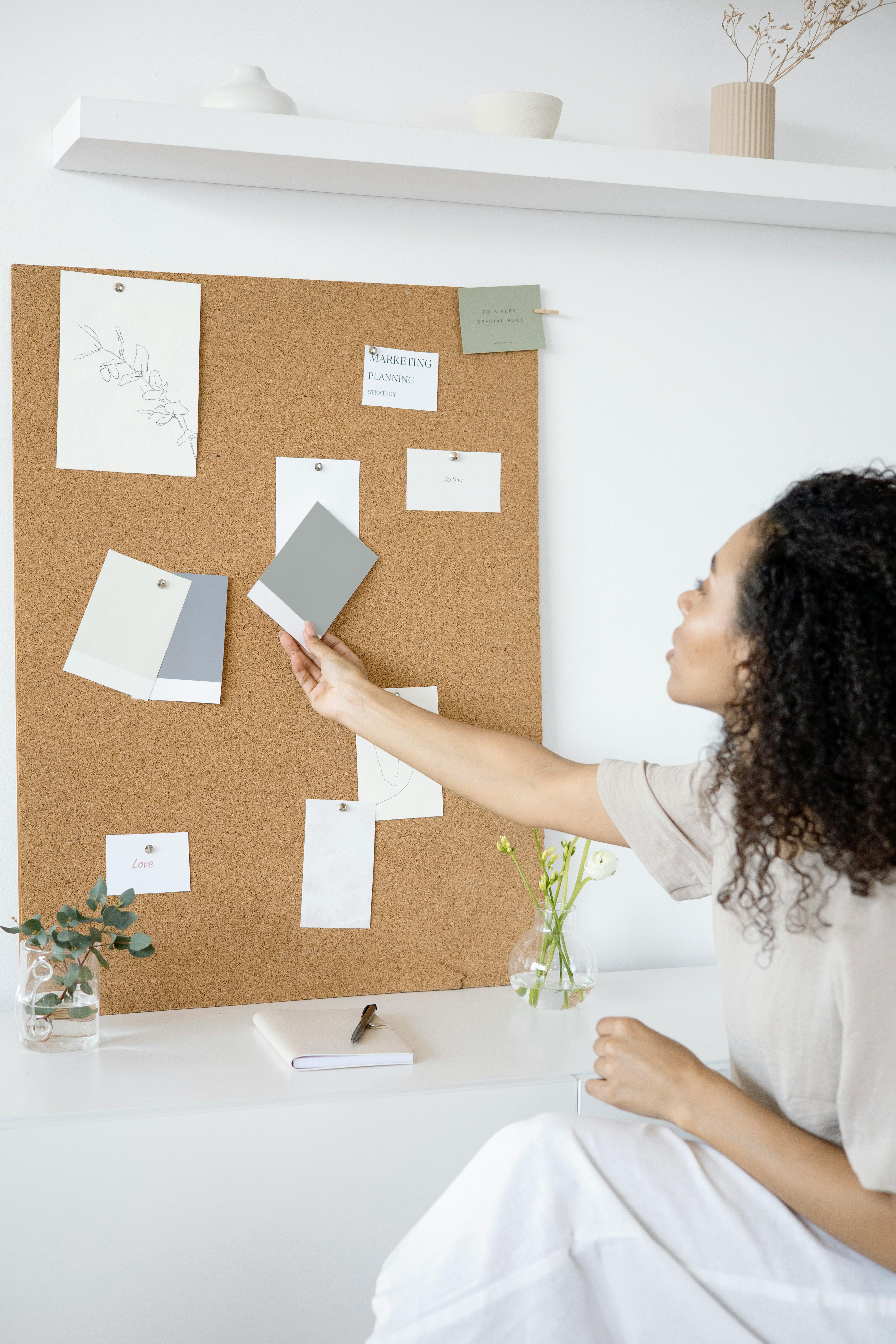
Photo by Anna Nekrashevich on Unsplash.
Let’s discuss the unsung hero of our industry: the client questionnaire. It’s not just a collection of mundane inquiries – it’s a powerful tool for nailing your next project.
Imagine you’re about to embark on a design journey with a new client. Exciting, right? But here’s the challenge – you’re essentially a mind reader without the crystal ball. That’s where a well-crafted questionnaire comes in, acting as your design detective tool.
The Trifecta of Questionnaire Perfection
An effective questionnaire covers three key areas. Let’s break them down:
1. Project Scope: The Nitty-Gritty Details
First, we need to get down to brass tacks. What’s the budget? Are we talking IKEA or Eames? And timeline – are we racing against the clock for a big reveal, or is this a leisurely makeover? Oh, and which rooms are we updating? A quick powder room refresh or a whole-house overhaul?
Consider these questions:
- What’s your ballpark budget for this project?
- When do you hope to have this wrapped up?
- Which spaces are we focusing on?
2. Current Space: The Good, The Bad, and The Ugly
Next, we need to investigate their current space. What’s already there? What’s staying, what’s going, and what’s causing frustration?
Some insightful questions to ask:
- What do you love about your current space?
- If you could change one thing, what would it be?
- Are there any pieces you’re particularly attached to?
3. Design Preferences: Diving into Their Style Psyche
Finally, we need to understand their design preferences. What styles resonate with them? Are they drawn to bold colors or neutral palettes? And most importantly, how do they actually live in their space?
Try these questions:
- If your style was a celebrity, who would it be?
- Show me your Pinterest board.
- Walk me through your perfect Saturday at home.
Now, here’s the key – getting this questionnaire out early isn’t just about gathering info. It demonstrates that you’re thoughtful, thorough, and ready to impress. Plus, it gives your clients a chance to really think about what they want (because sometimes they don’t even know).
Remember, good questions lead to great designs. They help you avoid those awkward ‘Oh, I thought you meant…’ moments and instead create those ‘How did you know exactly what I wanted?’ moments. And isn’t that what we’re all aiming for?
Developing a Professional Welcome Guide for Design Clients

Photo by Photo By: Kaboompics.com on Unsplash.
Creating a stellar welcome guide for your design clients can transform their experience working with you. It’s essentially your design process, communication style, and project expectations all wrapped up in a professional package.
Start by introducing yourself. Share your background, design philosophy, and what drives you. This is your opportunity to let your personality shine through and help clients feel they’re in capable hands.
Next, break down your design process step by step. Explain each phase clearly, from the initial consultation to the final reveal. This helps clients understand what to expect and when, reducing the need for constant updates.
Communication is key. Outline how and when you’ll be in touch. Will you have weekly check-ins? Prefer email over phone calls? Let them know. This sets clear expectations and avoids any confusion about contact frequency.
Address the financial aspects. Include your payment policies and schedules. Be transparent about when payments are due and what methods you accept. While it might feel uncomfortable, it prevents misunderstandings later.
Include helpful tips for a successful project. Share how clients can prepare for meetings or what types of inspiration images are most useful. This demonstrates your investment in their success.
Remember, this guide reflects your brand. Make it polished and professional. Use your brand colors, fonts, and consider including some of your best project photos. It’s a combination of your portfolio and business card – make it impressive.
By creating a comprehensive welcome guide, you’re not just showcasing your organizational skills. You’re anticipating client questions and streamlining the entire process. It’s beneficial for both you and your clients.
This is your roadmap to creating a welcome guide that will impress clients before you’ve even started designing. Now, go ahead and create that stellar first impression!
Setting Clear Budget Expectations During Onboarding

Photo by Photo By: Kaboompics.com on Unsplash.
Discussing budgets can be uncomfortable, but clarity on finances from the start is crucial for a smooth design process. When meeting with clients, I use a budget calculator to break down estimated costs for everything from sofas to wall sconces, providing a realistic picture of what their ideal space will cost.
I offer tiered pricing options, allowing clients to choose a package that fits their budget without compromising on style. Transparency is key, so I clearly outline my purchasing process and product markups upfront. I explain how I leverage trade discounts and industry connections to source quality pieces, often at better prices than clients could get independently.
By addressing finances during onboarding, we avoid awkward conversations later and help clients understand the value of hiring a professional to navigate the complexities of interior design.
Here’s a breakdown of how I typically structure design budgets:
| Budget Category | Percentage of Total Budget |
|---|---|
| Furniture | 50-60% |
| Lighting | 10-15% |
| Accessories & Art | 10-15% |
| Window Treatments | 5-10% |
| Design Fee | 15-20% |
A well-planned budget sets the foundation for a successful design project. Being upfront about costs ensures everyone is on the same page from the beginning, leading to a more enjoyable and stress-free design experience.
Streamlining the Contract Process for Interior Design Projects

Photo by RDNE Stock project on Unsplash.
Let’s talk contracts. I know, it’s not the most thrilling topic, but a well-crafted contract is essential in interior design. It’s comprehensive, clear, and yes, even a bit charming. (I just used ‘charming’ and ‘contract’ in the same sentence. Bear with me.)
Breaking Down the Contract Basics
First, let’s demystify what goes into a solid design agreement. Think of it as the blueprint for your project’s success:
- Project scope (what we’re creating)
- Deliverables (the tangible items you’ll receive)
- Timelines (because your living room shouldn’t take as long as building Rome)
- Payment schedules (keeping the project moving smoothly)
- Revision policies (for when ‘perfect’ needs adjusting)
- Termination clauses (the exit strategy, just in case)
Now, let’s break this down in plain English, shall we?
Why Each Section Matters (And How It Protects You)
Project scope is like setting the GPS for your design journey. It ensures we’re both headed to the same destination. Without it, you might envision a cozy cottage while I’m planning something entirely different.
Deliverables are our promise to you. It’s a design shopping list – you know exactly what you’re getting, whether it’s 3D renderings, furniture layouts, or that bespoke wallpaper you’ve been dreaming of.
Timelines keep us on track. They’re the difference between ‘Your new sofa will arrive next month’ and ‘Your grandkids might enjoy that sofa someday.’
Payment schedules ensure the project moves smoothly, like a well-oiled machine (or a perfectly silent drawer slide, if we’re sticking with design metaphors).
Revision policies protect both of us from ‘scope creep’ – when a small tweak turns into a complete overhaul. It’s like going to the hairdresser for a trim and walking out with a completely different style.
Termination clauses are the emergency exits of the contract world. Nobody likes to think about them, but they’re essential. They ensure that if things go sideways, we both know how to gracefully conclude our partnership.
Embracing the Digital Age: E-Signatures and Simplicity
Now, let’s talk about bringing contracts into the 21st century. Gone are the days of faxing 20-page documents or playing courier with manila envelopes. Digital signing solutions are the new standard in contract management. They’re efficient, secure, and environmentally friendly.
These tools not only make signing a breeze but also add an extra layer of security. Plus, they’re saving trees one contract at a time.
Making Contracts an Opportunity, Not an Obstacle
Here’s the key: a well-explained contract isn’t just a legal safeguard – it’s a trust-building exercise. It’s an opportunity to show your clients that you’re professional, thorough, and have their best interests at heart.
By walking them through each section, answering questions, and being open to discussions, you’re not just getting a signature – you’re laying the foundation for a great working relationship. It’s the difference between a mere transaction and the start of a productive partnership.
Remember, a good contract protects everyone involved. It’s not about creating barriers; it’s about setting clear expectations so you can focus on the creative aspects – like debating the merits of different design styles or finding the perfect color palette.
So there you have it. Contracts: not just for lawyers anymore. With some creativity, plain English, and digital tools, we can transform this paperwork into the beginning of a successful design collaboration. Ready to sign on the dotted line and create some interior magic?
Automating Your Interior Design Onboarding Process
Onboarding new clients can be a complex process, but there’s a powerful tool that can streamline this experience: automation. Imagine sipping your morning coffee while your new client is seamlessly integrated into your workflow with just a few clicks. This isn’t a fantasy – it’s the reality of embracing digital solutions like scheduling software, form builders, and client management systems.
By leveraging these tools, you can bid farewell to time-consuming administrative tasks. Those hours spent manually crafting welcome emails? A thing of the past. The key is to create templates for every aspect of your onboarding process – welcome emails, design questionnaires, contracts, and more. Once these are set up, you’ll wonder how you ever managed without them.
Let’s consider a practical example. If you typically spend an hour onboarding each new client, automation could potentially reduce that to 15 minutes. For 20 clients a year, that’s 15 hours saved – time you could invest in designing or refining your creative process.
However, the benefits extend beyond time savings. Automation ensures a consistently professional experience for every client, whether they’re refreshing a small space or undertaking a complete home renovation. It’s about elevating your service and allowing you to focus on what you do best – creating stunning designs.
Creating Memorable First Impressions with Personalized Touches

Photo by Ron Lach on Unsplash.
While a solid onboarding process is essential, incorporating unexpected personal touches can transform clients into enthusiastic advocates who’ll recommend you to everyone they know.
Imagine this: Your new client opens their inbox to find a short video of you, expressing genuine excitement about working together. It’s not a corporate production – it’s simply you, showcasing your authentic self, perhaps with a glimpse of that unique wallpaper you adore in the background. That immediate personal connection is invaluable.
Consider sending a handwritten note. In our digital age, there’s something refreshing about seeing actual penmanship. A brief message like ‘I’m excited to bring your vision to life!’ can significantly impact someone’s day.
Let’s consider branded gifts. While it’s not necessary to spend excessively, a small, thoughtful item can be impactful. Perhaps a luxurious candle in your signature scent, or an elegant notebook for jotting down design ideas. The value lies in demonstrating that you’ve considered how to make them feel special.
One of my preferred approaches is creating a custom design inspiration board for each client. It offers a preview of the project’s potential, tailored precisely to their preferences. When clients see that you’ve truly understood their ideas and tastes, it builds trust rapidly.
The beauty of these personal touches is that they don’t require a significant time investment, but the return in client loyalty is substantial. It’s akin to planting seeds for a long-term relationship that will flourish into referrals and repeat business.
Measuring and Improving Your Onboarding Process

Photo by Ivan Samkov on Unsplash.
Refining your onboarding process isn’t just about avoiding awkward moments. It’s about creating a seamless experience that sets the tone for your entire working relationship.
So, how do we ensure our onboarding process is effective? It’s all about feedback. And not just the polite ‘everything was fine’ kind. We need detailed insights. Here are some ways to gather valuable information:
- Track response times: Are you responding to clients promptly, or is there room for improvement?
- Satisfaction surveys: While they may seem formal, they’re invaluable sources of information. Keep them concise – no one wants to complete a lengthy questionnaire.
- Project progression analysis: Is your process running smoothly, or are there areas that need attention?
However, collecting feedback is only the first step. The real impact comes from implementing changes based on that feedback. For instance, if you discover clients are unclear about your timeline, create a visual roadmap. Or if they’re overwhelmed by technical jargon, simplify your language.
Remember, small adjustments can lead to significant improvements. It’s similar to fine-tuning a recipe – minor changes can transform the entire outcome. Don’t hesitate to get creative with your feedback methods. I once had a client suggest we conduct our check-ins over coffee, which turned out to be a great improvement to our process.
The key is continuous evolution. Your onboarding process should be as dynamic as the design world itself. So, gather that feedback and refine your process. Your future clients (and your peace of mind) will appreciate it.
Transforming Your Interior Design Business Through Strategic Onboarding
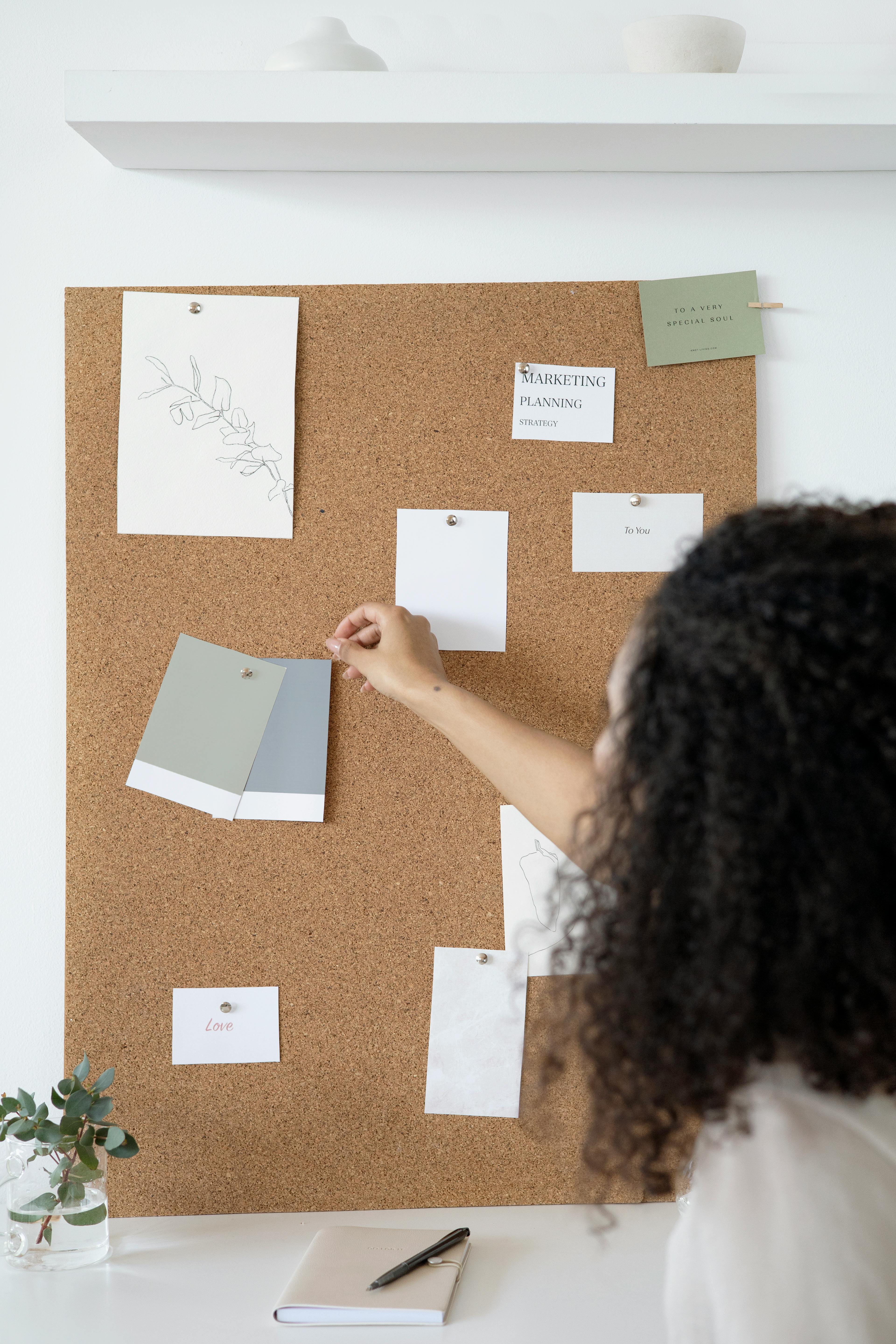
Photo by Anna Nekrashevich on Unsplash.
We’ve covered significant ground on this journey through client onboarding. It’s not just about initiating projects – it’s about setting the stage for your entire business to thrive.
By implementing these strategies – from crafting effective questionnaires to creating personalized welcome guides – you’re not just starting projects. You’re building a foundation of trust that will yield benefits in unexpected ways.
Consider the potential outcomes: satisfied clients, increased referrals, and a stellar reputation. It’s an investment in your business’s future.
Remember, this onboarding process isn’t static. It’s a dynamic part of your business that evolves alongside you. Don’t hesitate to adjust and improve as you progress.
You might be wondering, “This sounds promising, but where do I begin?” My suggestion? Select one strategy from this guide and implement it this week. Observe how it feels, how your clients respond, and build from there.
Ready to elevate your client experience and grow your design business? Join our exclusive community for proven templates, onboarding resources, and expert support.



